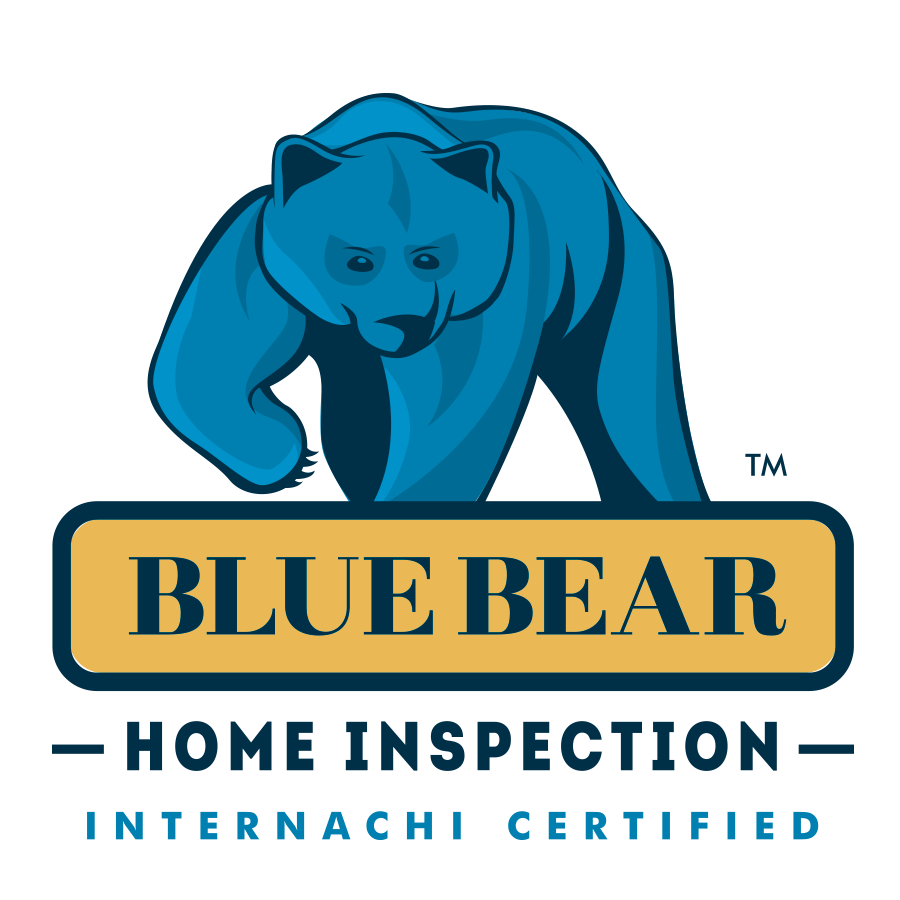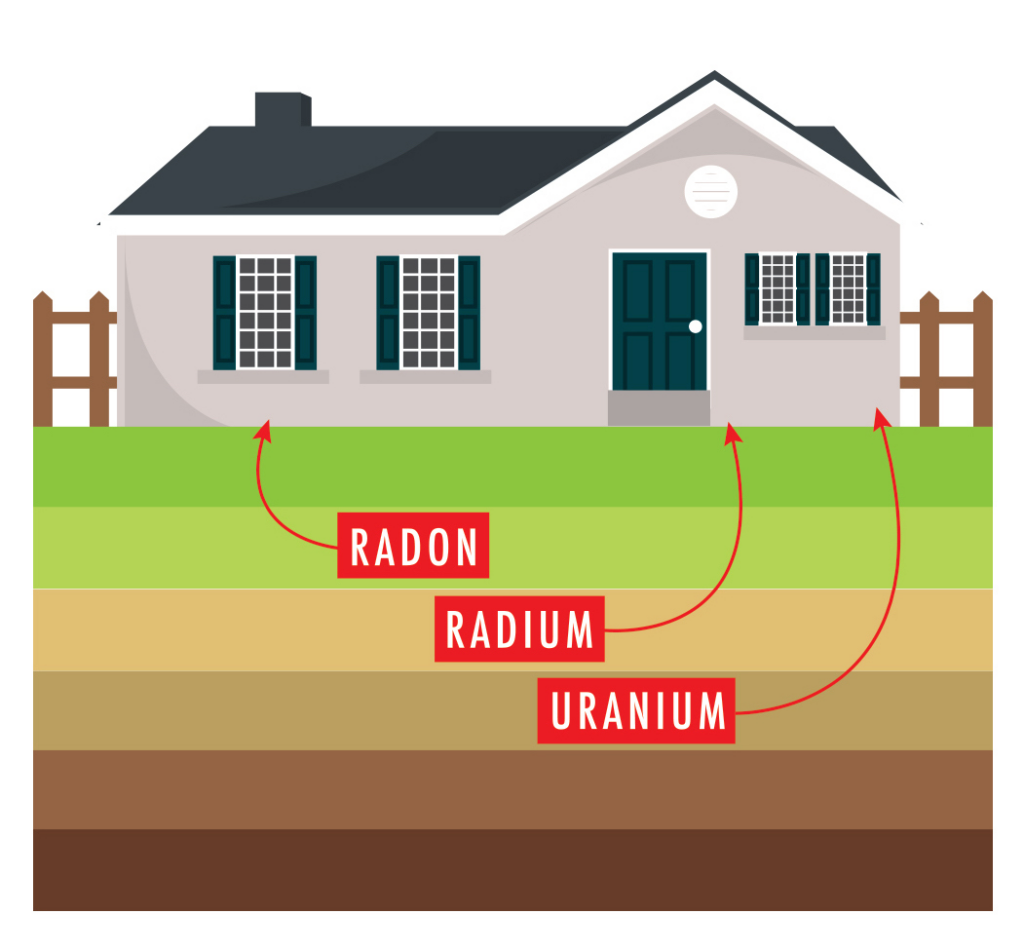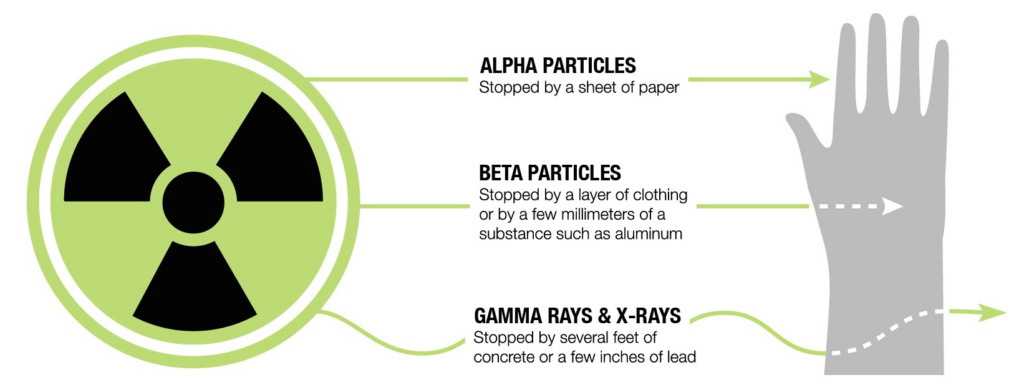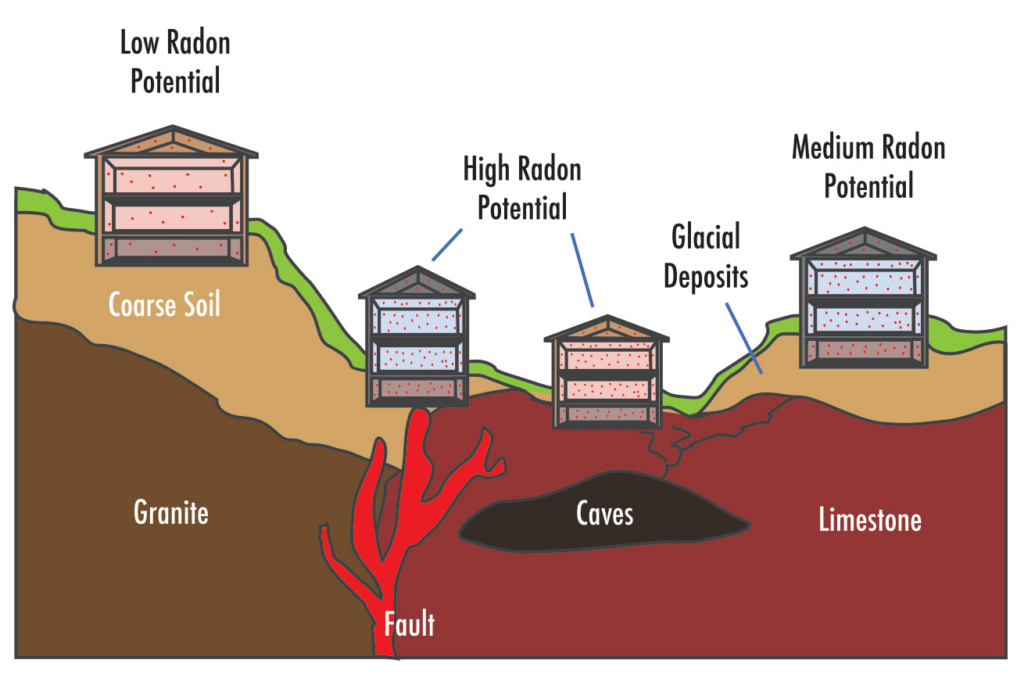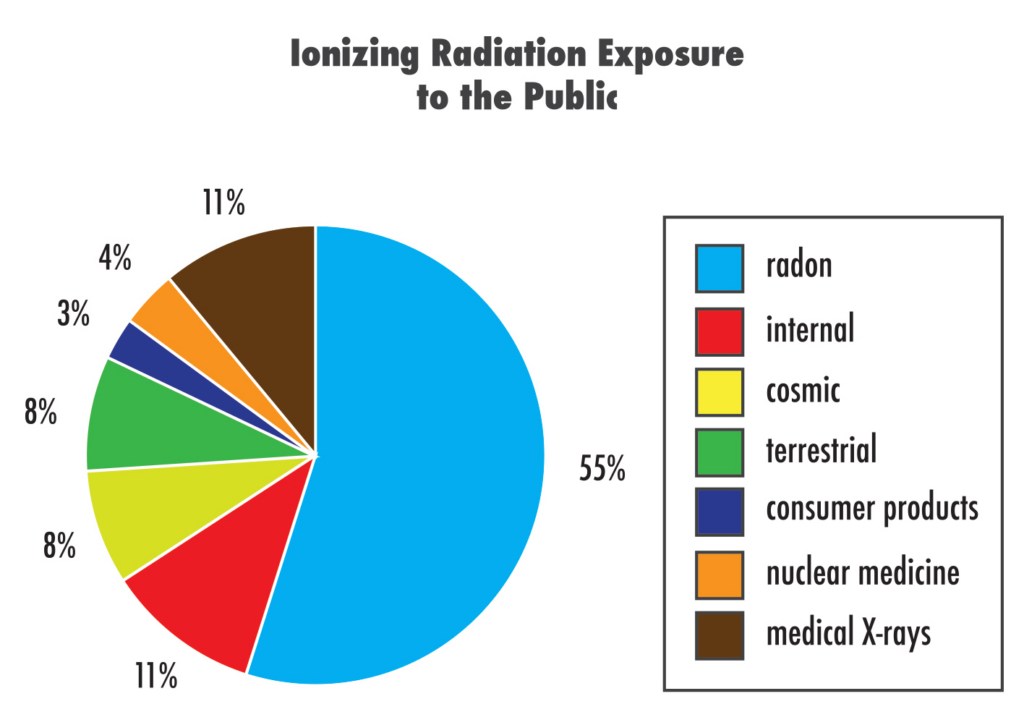“We know that radon is a carcinogen….research confirms that breathing [even] low levels can lead to lung cancer.”
– Tom Kelly – Former Director of EPA’s Indoor Environments Division
Health Risks
Studies based on research conducted in North America and in Europe show definitive evidence of an association between residential radon exposure and lung cancer.
“These findings effectively end any doubts about the risks to Americans of having radon in their homes,” said Tom Kelly, director of the EPA’s Indoor Environments Division. “We know that [it] is a carcinogen. This research confirms that breathing [even] low levels can lead to lung cancer.”
The EPA estimates that it is responsible for about 20,000 lung cancer deaths each year in the United States. Exposure to this odorless, tasteless and invisible gas is the leading cause of lung cancer after smoking.
Radon Entry
The air pressure in a house is generally lower than in the surrounding air and soil, particularly at the basement and foundation levels. This difference in pressure causes a house to act like a vacuum, drawing in air as well as soil-gases, through cracks in the foundation and other openings. Some of the replacement air comes from the underlying soil and can also contain the gas.
Does foundation type affect entry?
Because it can literally be sucked into a home, any home can potentially have a problem. All conventional house construction types have been found to have levels exceeding the action level of 4 pCi/L.
“The U.S. Environmental Protection Agency estimates that radon is responsible for more than 21,000 lung cancer deaths per year (about one person every 25 minutes). Data collected by the department indicates that 1 in 5 Florida residences has elevated radon levels.”
– Florida Department of Health – FloridaHealth.gov
Protection
The best option for protecting your property is to conduct a test. Thomas of Blue Bear Home Inspection is certified through the Florida Department of Health as well as InterNACHI as Certified Measurement Technician. The test is non-invasive, takes ~2 days with results ready almost immediately and are supplied to you in a clear and concise manner.
If for some reason your levels are elevated, a second test will need to be conducted. Your Tallahassee Home Inspector works with a team of environmental engineers which can explain your options as well as educate you on ways to mitigate the levels.
The process does not have to be scary and your Tallahassee home’s indoor levels should be fine – however, the peace of mind you get from having the levels measured should far outweigh the minimal costs (~$115). Thomas with Blue Bear Home Inspection is state certified and nationally trained to measure your indoor air radon levels.
Peace of Mind
The EPA set an action level of 4 pCi/L for indoor air. The EPA recommends that if levels are found above 4 pCi/L, those levels should be mitigated. There is still some risk at a level below 4 pCi/L, and the EPA suggests that people may want to mitigate their homes to get them as close to the ambient outdoor level as possible. Outdoor air has an average of approximately 0.4 pCi/L.
Ask your Blue Bear Tallahassee Home Inspector about radon and consider having your house tested. Enjoy the peace of mind of knowing your indoor air levels.
What Are Your Levels?
All inspectors at Blue Bear Home Inspection are certified by the State of Florida as Radon Measurement Technician by the Florida Department of Health, and we use high quality Continuous Radon Monitors to measure radon levels. We can provide a detailed graphical report the same day the testing is completed.
Radon measurement can be conducted as part of your home inspection or independently. The EPA recommends testing your home’s levels every couple of years. Generally the testing will take place over the course of 2 full days.
